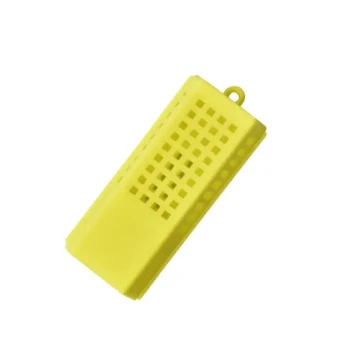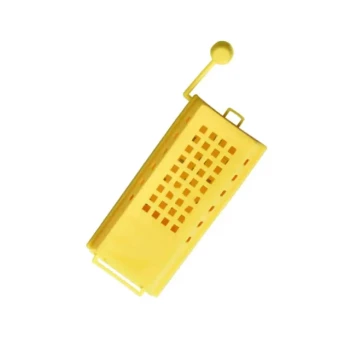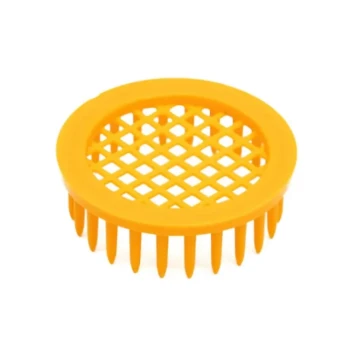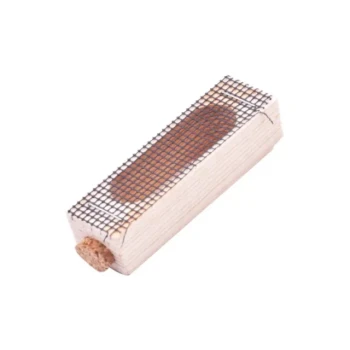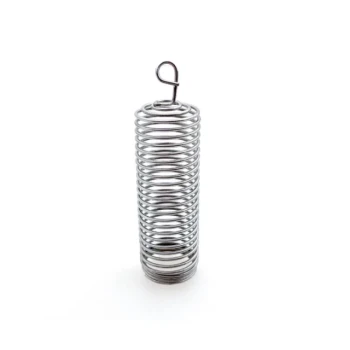Marking a queen bee is a fundamental practice for efficient and effective hive management. It allows beekeepers to quickly identify her during inspections, track her age, and easily assess the overall status of the colony. This simple act provides crucial data at a glance, transforming a potentially disruptive inspection into a streamlined and informative process.
The core challenge in beekeeping is gathering accurate information about a colony with minimal disturbance. Marking a queen bee solves this by turning her from an anonymous individual among thousands into a known, trackable asset, making inspections faster, less stressful for the bees, and far more data-rich.

The Strategic Advantage of a Marked Queen
Marking provides immediate, practical benefits that directly impact the speed and quality of every hive inspection. It eliminates guesswork and allows you to focus on the health of the colony.
Drastically Reduce Inspection Time
A spot of color on the queen's thorax makes her stand out against the backdrop of thousands of her workers. This allows you to locate her in seconds rather than minutes.
Reducing the time the hive is open minimizes stress on the colony, reduces the risk of chilling the brood, and makes the beekeeper's work far more efficient.
Instantly Verify the Hive is Queenright
For any beekeeper, but especially those who are new, the primary goal of an inspection is often to confirm the queen is present and laying.
Seeing the marked queen provides immediate and definitive peace of mind, confirming the colony is "queenright" without an exhaustive search for eggs.
Easily Assess Her Performance
Once you find the queen, you can immediately assess the brood pattern around her. A solid, compact pattern is the sign of a healthy, well-mated queen.
This quick assessment of her laying pattern is one of the most important indicators of colony health and future productivity.
Using the Mark as a Diagnostic Tool
Beyond simple identification, the mark serves as a critical data point for understanding the colony's history and predicting its future needs. This is where marking transitions from a convenience to a powerful management tool.
Track Her Age and Lineage
An international color code system exists for marking queens based on the year they were born. This allows you to know her age at a single glance.
A queen's egg-laying productivity typically declines after two to three years. Knowing her exact age helps you anticipate this decline and plan to replace her before the colony's population suffers.
Detect Supersedure or Swarm Events
If you open a hive and find an unmarked queen, but you know you previously marked one, you have definitive proof of a supersedure (the colony replaced her) or a swarm.
This knowledge is vital. It tells you the colony has a new, young queen and resets your management timeline without any ambiguity.
Understanding the Trade-offs and Best Practices
While marking is overwhelmingly beneficial, it must be performed correctly to ensure the queen's safety. The risks are minimal but should be respected.
The Risk of Improper Handling
The primary risk is accidentally injuring the queen through excessive pressure or rough handling. It is essential to be gentle and confident in your movements.
Using a tool like a one-handed queen catcher or a marking tube can help immobilize her safely, especially for less experienced beekeepers.
Choosing the Right Tools
Always use specialized, non-toxic marking pens. Many beekeepers prefer water-based paint pens designed for this purpose.
The marker should be highly pigmented to ensure visibility but entirely safe for the bee. The goal is to apply the mark with a simple, light touch to the thorax (the middle section of her back).
No Negative Impact on the Colony
When done correctly, marking has no negative effects. The other bees accept the marked queen without issue, and it does not hinder her mating flights or egg-laying abilities.
Is Marking the Queen Right for You?
The decision to mark your queen depends on your management style and goals.
- If your primary focus is efficiency and minimizing hive disruption: Marking is essential for quickly locating the queen and reducing the time you spend inside the hive.
- If your primary focus is long-term hive management: Marking is the only reliable way to track queen age and lineage, which is critical for proactive requeening.
- If you are a new beekeeper seeking confidence: Seeing your marked queen provides immediate confirmation that your hive has its vital leader, removing a major source of anxiety.
Ultimately, marking your queen transforms a key uncertainty into a known asset, empowering you to manage your colonies with greater precision and confidence.
Summary Table:
| Benefit | Key Outcome |
|---|---|
| Quick Identification | Drastically reduces hive inspection time and stress. |
| Verify Queen Status | Instantly confirms the colony is "queenright." |
| Track Age & Lineage | Enables proactive requeening based on international color codes. |
| Diagnose Swarm/Supersedure | Provides definitive proof of colony events for better management. |
Ready to manage your apiary with precision?
As a commercial beekeeper or equipment distributor, efficient hive management is key to your success. Marking your queens is a foundational practice, and having the right, reliable tools makes all the difference.
HONESTBEE supplies high-quality, durable beekeeping supplies and equipment—including safe queen marking kits—to commercial apiaries and distributors through our wholesale-focused operations. We help you work smarter, not harder.
Contact HONESTBEE today to discuss your wholesale supply needs and elevate your beekeeping operation.
Visual Guide
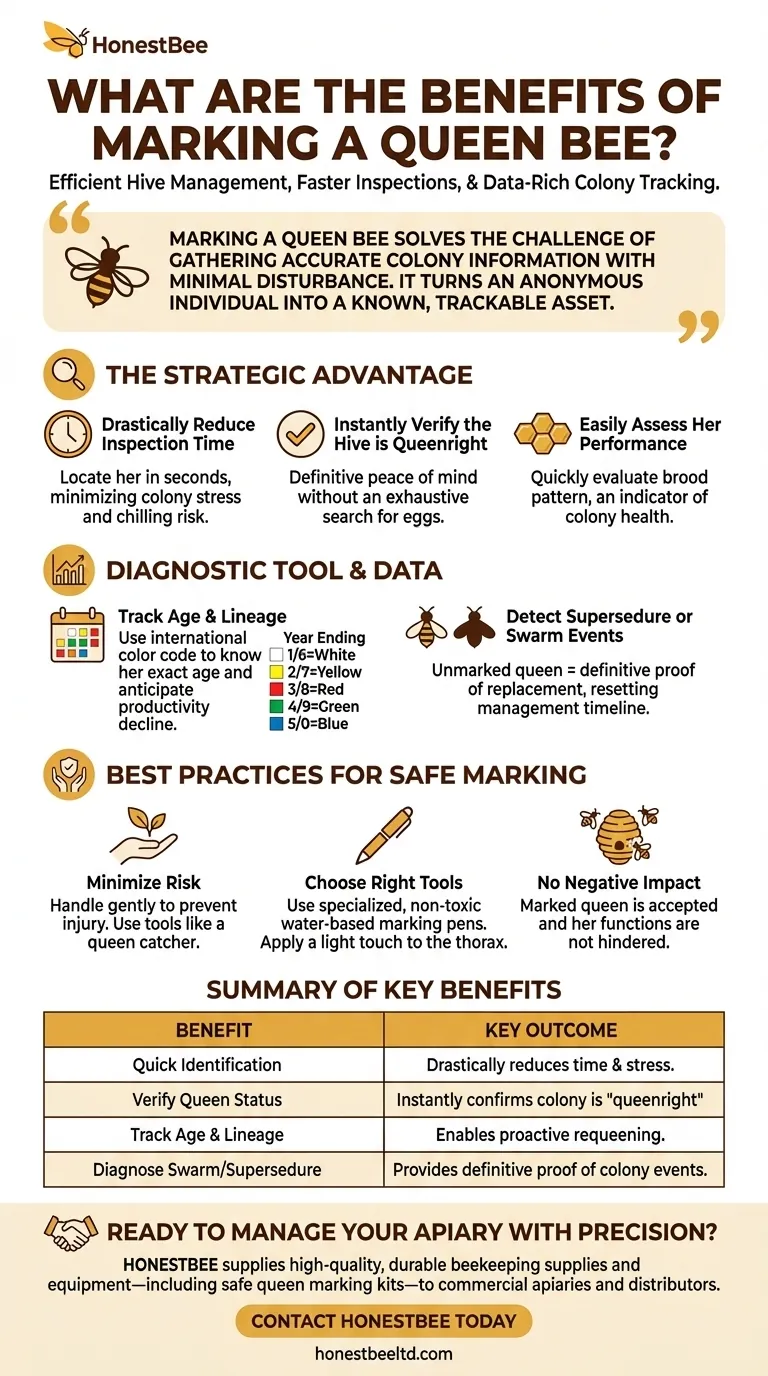
Related Products
- Queen Bee Marking Pen POSCA Queen Marking Pens for Beekeeping Bee Markers
- Queen Bee Marking Pen UNI Medium Point for Queen and Bee Marking
- Queen Bee Marking Tube Cage Bottle Catcher Holder with Clear Plastic Plunger Marker
- Professional Engraved Round Hive Number Tags for Beekeeping
- Professional Galvanized Hive Strap with Secure Locking Buckle for Beekeeping
People Also Ask
- What are the Queen marking colors associated with specific years? Master Hive Management with the 5-Year Color Code
- What are the benefits of learning to mark your own queen bees? Boost Your Apiary's Efficiency and Confidence
- What type of markers are commonly used for marking Queen bees? Choose the Safe, Non-Toxic Standard
- What should you do immediately after marking a bee? Ensure a Clean, Durable Mark with This Key Step
- What are the benefits of marking a Queen bee for hive management? Boost Efficiency & Colony Health






